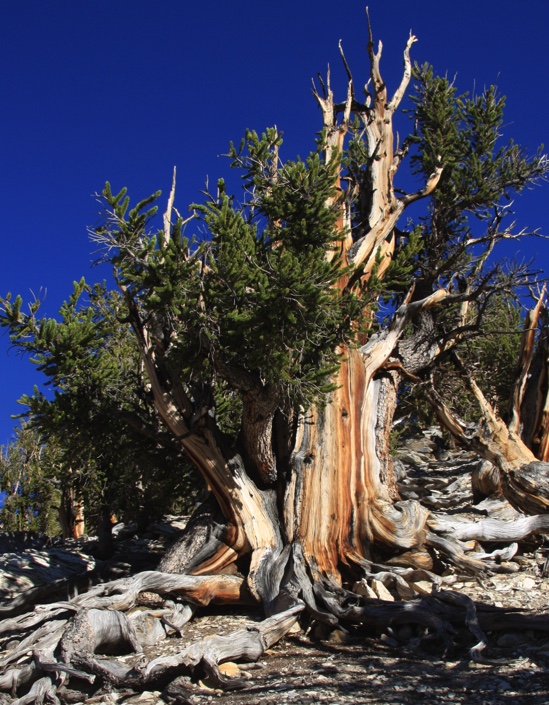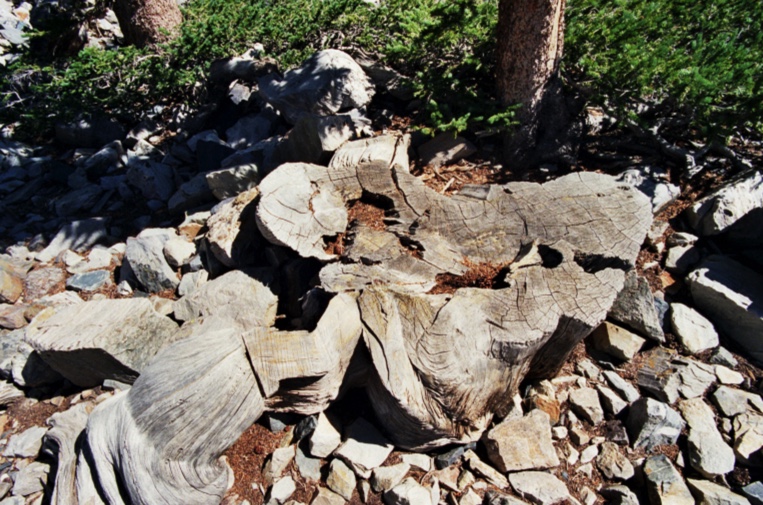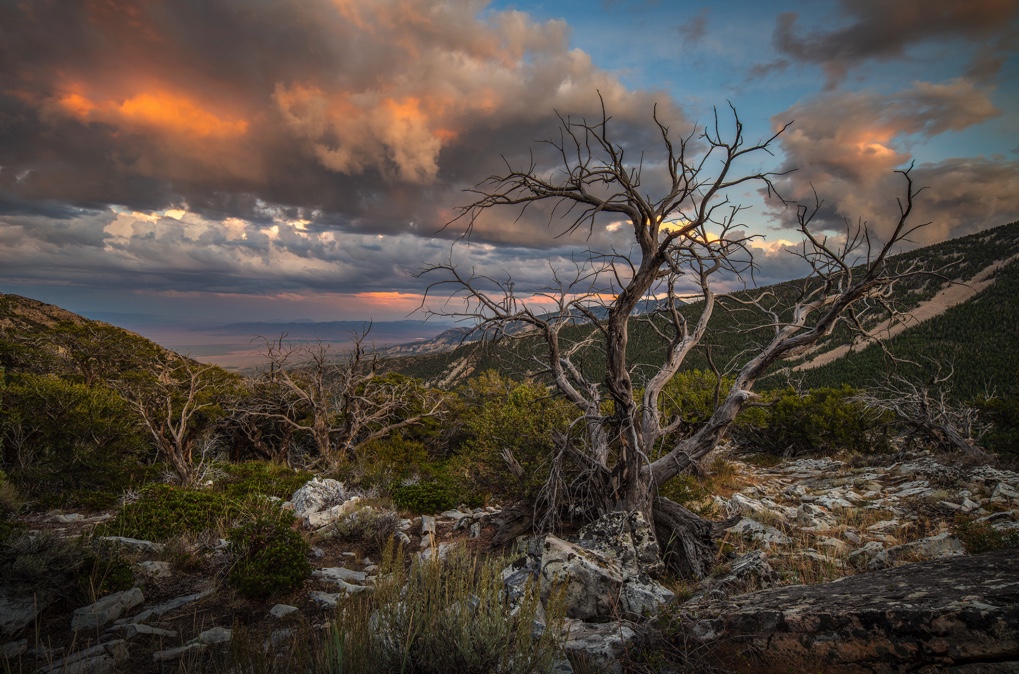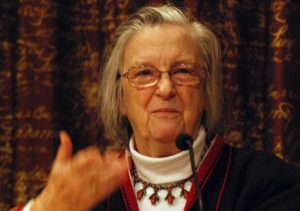It went by various names. Taxonomists call it a bristlecone pine. Local mountaineers call it Prometheus. A particular scientist labelled it WPN-114. And then he cut it down. Later, he learned that it was nearly 5,000 years old, the oldest known living non-clonal organism in the world. Uh-oh.

Donald Currey was a geography graduate students at the University of North Carolina-Chapel Hill studying the Little Ice Age that occurred during the last few thousand years. He went to Nevada to age bristlecone pines, among the world’s oldest trees, that grew on glacial deposits associated with the ice age. Bristlecone pines, like all trees growing in temperate regions, can be aged from the rings in their wood. Currey was using a device called a Swedish increment borer to drill a narrow hole into tree trunks to extract samples for dating. He had chosen this particular tree, WPN-114, for no particular reason than it was surely old enough to cover the desired span of years.
Now the story gets a little confusing. Some accounts state that Currey got his increment borer stuck in the tree and, needing to retrieve it for subsequent work, he asked the U.S. Forest Service, which operated the national forest in which he was working, for permission to cut down the tree. Other accounts state that the gnarly shape of the tree didn’t allow Currey to get good samples with his borer, so he realized he had to cut the tree down to get complete cross-sections of the trunk. Whatever the precise reason, the Forest Service gave permission for the tree to be cut. On August 7 (or perhaps August 6—this detail is a little sketchy as well), 1964, a crew used chain saws to cut down the tree.

Later, when Currey analyzed samples from the tree, he discovered a startling fact. This particular tree, unbeknownst to any of the people working with it, contained more than 4,800 annual growth rings. That made it the oldest living non-clonal tree in the world (stands of some clonal trees, like aspen, are now considered one individual and, therefore, are given ages that go back thousands of years). Subsequent analysis discovered more rings and, given that trees growing in the harsh environment where this tree lived sometimes don’t grow at all in a year, the tree’s age is now estimated to have been well over 4,900 years when it was cut.
It was an accident, of course. Not that the tree was cut down—that was purposeful, and done with permission. And it wasn’t a big deal at the time. As one observer has stated, “But it wasn’t something that I think they struggled with at the time, because it was just a tree, and the mindset was that trees were a renewable resource and they would grow back. And it didn’t seem like it was any particularly special tree.” But the fact that it was the world’s oldest living thing was an accident. One with mixed blessings.
On the negative side, of course, the tree was dead. It had made it through thousands of years of storm and strife but had succumbed to the needs of science and the power of the chainsaw. Donald Currey came in for lots of blame in subsequent years, eventually refusing to talk about it any more. He came out okay, however, having become a highly regarded geography professor at the University of Utah. He died in 2004.
On the positive side, the reported age of this tree made the bristlecone pine (Pinus longaeva), which grows only in high elevations of California, Nevada And Utah, a highly regarded species. Before this, it had been overlooked as beautiful or remarkable, considered noteworthy mainly by photographers that admired its twisted, gnarly shape. But, the tree has remarkable adaptations to its cold, windy, rocky habitat. The tree’s roots nourish only the portion of the tree directly above them. Consequently, portions of the tree can die, but other portions remain healthy, often supported by a single root and a ribbon of bark only inches wide. The dense wood resists pests, diseases and the harsh climate. The trees grow in sparse stands just below the tree line. And we now know that the species is one of the longest living on earth. Bristlecone pines are now protected on all federal lands.

A second positive is that the loss of WPN-114, or Prometheus, caused a national controversy as the news of its cutting became known. The tree lived in Humboldt National Forest, on the Utah-Nevada border where Wheeler Peak, the second-highest mountain in Nevada rises to over 13,000 feet. Local advocates had long wanted the area to be re-classified as a national park, and they seized on the loss of Prometheus as evidence for their position. They won, and, in 1986, Great Basin National Park was created. The park covers over 77,000 acres, but because of the same harsh environment that grows bristlecone pines, it is one of the least visited parks.
The name Prometheus for this tree turns out to be highly ironic. Prometheus was the ancient Greek who stole fire from the gods, effectively giving humans knowledge and civilization. And Prometheus the tree was felled in the pursuit of knowledge, largely because our knowledge was insufficient to notice how special it was. But as more knowledge has come, we have learned that Prometheus wasn’t really the oldest tree—other older individuals have been found since, and more, even older, trees will be discovered in the future.
References:
Cohen, Michael P. 2004. Oldest Living Tree Tells All. Terrain.org, No. 14, Winter/Spring 2004. Available at: https://www.terrain.org/essays/14/cohen.htm.
Eveleth, Rose. 2012. How One Man Accidentally Killed the Oldest Tree Ever. Smithsonian Magazine, November 15, 2o012. Available at: https://www.smithsonianmag.com/smart-news/how-one-man-accidentally-killed-the-oldest-tree-ever-125764872/
National Park Service. Bristlecone Pines. Great Basin National Park, Nevada. Available at: https://www.nps.gov/grba/planyourvisit/identifying-bristlecone-pines.htm.

